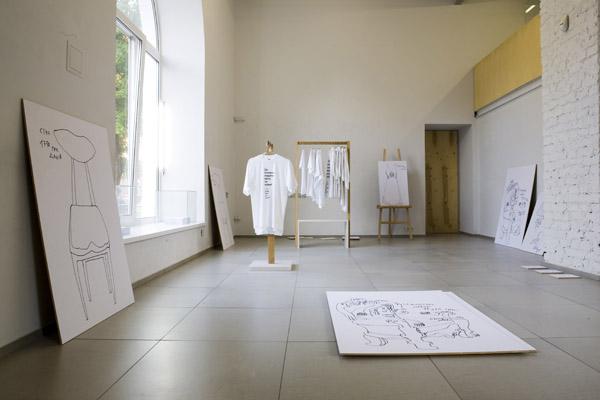http://www.indexfoundation.se/scripts/Page.asp?id=378

KRAM TEXTS: USELESS READING
Introduction
USELESS READING
The KrAM Project - for the international audience
When the proposal was made in summer 2008 to present KrAM (Criticism of Actual Art) internationally and in particular to the audience of INDEX (the Swedish Contemporary Foundation, Stockholm) all the founders of KrAM began to think… Mainly they wondered if the project would be understood, given that it makes sense only in a Ukrainian context and is intended for the Ukrainian reader. It seems that it would be unsuitable for the foreign art expert… But in the end we decided to take a risk and provide a small selection of texts for “beyond Ukraine” using the somewhat surprising name “Useless Reading.” At first glance it’s provocative and resembles more an artistic action. However, by using it, we are stressing the local nature of our project…Perhaps a similar idea is concealed in the Ukrainian name of the project. In Ukrainian “kram” means goods, wares, merchandise. Though in the local context, it’s not that works of art aren’t completely unnecessary, at present they’re not understood; nobody knows “what’s it for?” and “what do you make of this?” Simply speaking, there exists almost no hermeneutic tradition of art messages that require not some kind of ideological perception, but more than anything else – interpretation…Although we don’t claim to have completely filled this niche…
Thus, we are fully aware that KrAM will also be incomprehensible for the international audience. This is not only due to the fact that the overall situation with art in Ukraine is rather difficult to comprehend for a foreigner. We’ll try to provide a few facts.
Fact #1 – Since Ukraine’s independence, in other words starting in 1991, official Soviet art (social realism) that was once considered progressive and modern, lots its importance. Back then it mainly fulfilled the role of a “screen” to allow one to work in art professionally and had few truly devoted adherents. Nevertheless, it customary to call the art that replaced it, that which is created by its contemporaries “here and now” – “contemporary art” rather than using the customary Ukrainian words “suchasne mystetstvo.” The fascination with pronouncing foreign words likely creates a realm of something unusual, and practically everyone who finds their way into it can discover some secret meaning or will automatically join the global context.
Fact #2 - At the National Academy of Fine Arts, the course on history of Ukrainian art ends with the 1960s while the course on history of world art ends with the 2000s. For many Ukrainian students, Kandinsky and Malevich are still considered innovative artists (and by no means classics).
Fact #3 – There is no Museum of Contemporary Art in Ukraine. And most importantly, there is no institution that would take on the work of creating an archive of processes taking place in contemporary art in our country.
Fact #4 – At the National University of “Kyiv-Mohyla Academy’s” Center for Contemporary Art (CCA), which was founded by George Soros in Kyiv and has held exhibits of works by Bill Viola, Andy Warhol and Joseph Beuys, it’s never impossible to meeting someone from the Ministry of Culture of Ukraine. But the most widespread reaction by “workers from the arts” from the University to the work of CCA is plain incomprehension and non-acceptance.
Fact #5 – One can count upwards of ten critics in the country, but even they write expert articles rather sporadically given that absence of requests. Therefore, the press release is mainly all that’s ever written about an art event.
It was in this context that the electronic publication KrAM appeared. Its mission is to stimulate art criticism in Ukraine.
Several facts about KrAM:
KrAM is the private initiative of six people, each of whom has some connection to art.
The founding members of KrAM post their own commentaries, essays and critiques about actual art or invite other authors to do so.
KrAM has no editorial board. The texts that appear on the site are the initiative of every founding member, who takes on the responsibility for posting materials.
KrAM receives no outside financial support. It functions as a closed club. The electronic publication is paid for by the founding members’ membership dues.
The club’s founding members:
Volodymyr Babyuk, art consumer
Kateryna Botanova, art manager
Yulia Vaganova, art manager
Alevtina Kakhidze, artist
Taras Lyuty, philosopher
Olesya Ostrovska, curator






